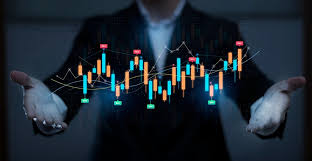
Automated forex trading has revolutionized the way traders engage with currency markets. By leveraging advanced algorithms and trading bots, investors can execute trades more efficiently and effectively than ever before. The automation of trade execution allows for a systematic approach to forex trading, minimizing human emotions and errors. Moreover, finding a trustworthy automated forex trading Turkey Brokers is crucial for traders looking to capitalize on market opportunities.
What is Automated Forex Trading?
Automated forex trading refers to the use of software programs or trading systems to enter and exit trades in the forex market. These systems can analyze market conditions, set trading parameters, and execute trades based on predetermined criteria without human intervention. This technology has become increasingly popular among traders seeking to improve their trading results by removing the uncertainties and emotional factors associated with manual trading.
Benefits of Automated Forex Trading
The advantages of automated forex trading extend beyond mere convenience. Some of the most notable benefits include:
- Consistency: Automated systems adhere strictly to predefined trading strategies, ensuring consistent performance and decision-making.
- Speed: Automated trading systems can analyze large volumes of data and execute trades within milliseconds, capitalizing on fleeting opportunities.
- Emotion-Free Trading: By removing human emotions, traders can avoid panic selling or greed-driven purchasing, leading to more rational decision-making.
- Backtesting Capabilities: Traders can backtest their strategies using historical data to evaluate performance before applying them to live trading.
- Time-Saving: Automated systems can operate 24/5, allowing traders to focus on other activities while the software manages trades.
Types of Automated Trading Systems
There are various types of automated trading systems available, each catering to different trading styles and strategies. These include:
1. Expert Advisors (EAs)
Commonly used in MetaTrader platforms, EAs are highly customizable programs that can execute trades based on a wide range of indicators and market conditions.
2. Trading Bots
These are pre-programmed algorithms developed to trade without human intervention. They can be used across multiple trading platforms and often rely on machine learning to improve performance over time.

3. Signal Providers
Some traders subscribe to automated signals generated by third-party providers. These signals suggest entry and exit points based on technical analysis, but they require manual execution unless combined with automated systems.
Key Components of Automated Forex Trading Systems
A successful automated trading system typically includes the following components:
- Market Analysis: Advanced algorithms analyze currency pairs and market conditions to identify trading opportunities.
- Risk Management: Effective systems have built-in risk management features to minimize losses—such as stop-loss and take-profit orders.
- Trade Execution: Rapid execution capabilities are essential for entering and exiting trades at the most favorable prices.
- Performance Monitoring: Regular assessments of the system’s performance enable traders to make necessary adjustments and optimize strategies.
Choosing an Automated Trading System
Selecting the right automated trading system is crucial for success in forex trading. Factors to consider include:
- Reputation: Research the software provider and read reviews from other traders to ensure credibility and reliability.
- Customization: Look for a system that allows for flexibility in terms of strategy and parameters to suit individual trading styles.
- Support: A reliable support system is essential in case technical issues arise. Check for available customer support channels.
- Cost: Evaluate the pricing model, ensuring that the features offered justify the costs involved.
- Compatibility: Ensure that the automated trading system is compatible with your chosen trading platform.
Common Challenges in Automated Forex Trading
While automated trading can offer numerous advantages, it is not without its challenges:
- Over-Optimization: Traders may fall into the trap of over-optimizing their systems based on historical data, leading to poor performance in live markets.
- Market Volatility: Sudden price fluctuations can impact the effectiveness of automated strategies, requiring real-time adjustments.
- Technical Failures: System glitches, internet outages, or connectivity issues can hinder trade execution and impact profitability.
- Lack of Adaptation: Automated systems can struggle to adapt to changing market conditions if not regularly updated or optimized.
Future of Automated Forex Trading
The future of automated forex trading is bright, with advancements in artificial intelligence (AI) and machine learning paving the way for more sophisticated trading algorithms. These technologies enhance the ability of systems to analyze market data, make predictions, and adapt to real-time scenarios efficiently. Furthermore, as more traders embrace automation, competition is likely to increase, leading to continuous innovation in the market.
Conclusion
Automated forex trading represents a significant transformation in the trading landscape, offering numerous benefits that can enhance overall trading performance. However, success in this domain requires understanding the intricacies of trading systems, careful selection of tools, and ongoing management of trades. By combining technology with strategic thinking, traders can harness the power of automation to achieve their forex trading goals.
